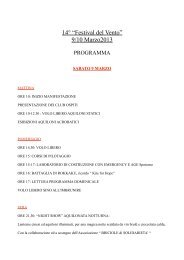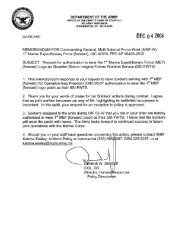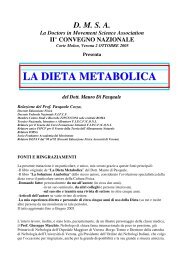Science vs. religion : what scientists really think - File PDF
Science vs. religion : what scientists really think - File PDF
Science vs. religion : what scientists really think - File PDF
Create successful ePaper yourself
Turn your PDF publications into a flip-book with our unique Google optimized e-Paper software.
192 NOTES TO PAGES 33–36group of <strong>scientists</strong>. By 2005 a shift had occurred. Among those who responded to the2005 survey, younger <strong>scientists</strong> are less likely than older <strong>scientists</strong> to have no <strong>religion</strong>.9. Percentages for <strong>scientists</strong> in the table equal 101 percent because of rounding.10. I draw the reader’s attention to the complexity of the term “Jewish,” which canconnote both ethnic and religious categories. The survey data does not allow insightinto the nuances individuals intended by this self-identification. For more in-depthanalysis of the complexities that surround usage of the term, refer to Sarna, “AmericanJews in the New Millennium.”11. These statistics compare the General Social Survey 2006 to the Religion AmongAcademic Scientists 2005. Data are weighted.12. When comparing the General Social Survey 2006 to elite <strong>scientists</strong> (2005), 1.1percent of the <strong>scientists</strong> identify as Hindus, compared to 0.3 percent of the generalpublic. The survey data is weighted to overcome differences in size of population,and results are statistically significant at the .05 level.13. See Ecklund, Park, and Veliz, “Secularization and Religious Change among EliteScientists.” Here we discuss in further detail the impact the increasing proportion of<strong>scientists</strong> who are immigrants and non-U.S. citizens will have on the religious compositionof the academy.14. For example, see Giberson and Artigas, Oracles of <strong>Science</strong> ; Miller, FindingDarwin’s God ; Collins, The Language of God ; Giberson, Saving Darwin ; and Falk, Comingto Peace with <strong>Science</strong> . For intelligent design literature (contrary to the above), see Behe,Darwin’s Black Box , and Dembski, Intelligent Design .15. Scientists were asked, “When compared to most Americans, where would youplace your religious views on a seven-point scale, with 1 being ‘Extremely liberal’ and 7being ‘Extremely conservative’?”16. When statistical tests compare the significance of differences in proportionof adherents between <strong>scientists</strong> and the general population, all values are significant atthe .001 level. Comparison to the general public is taken from the General Social Survey1998 because that is the most recent wave of the survey to ask this question. See Smith,Emerson, Gallagher, Kennedy, and Sikkink, American Evangelicalism , for a discussion ofthe core beliefs and practices of American evangelicals.17. Respondents were asked, “Which one of the following statements comes closestto expressing <strong>what</strong> you believe about God?” For the purposes of this chapter, fourrespondent categories were collapsed into one category of belief in God: “I believe in ahigher power, but it is not God,” “I believe in God sometimes,” “I have some doubts,but I believe in God,” and “I have no doubts about God’s existence.”18. See Berger, The Sacred Canopy , and Berger and Luckmann, The Social Constructionof Reality . In both of these seminal works, Berger discusses the importance ofthe individual interacting in community with social structures—such as religiouscommunities—as a way of figuring out his or her conception of reality.19. While the term plausibility structure may be foreign to many religious people,they often embrace the concept but use different terminology. For instance, it is commonamong evangelicals to talk about God founding certain human social institutions
















